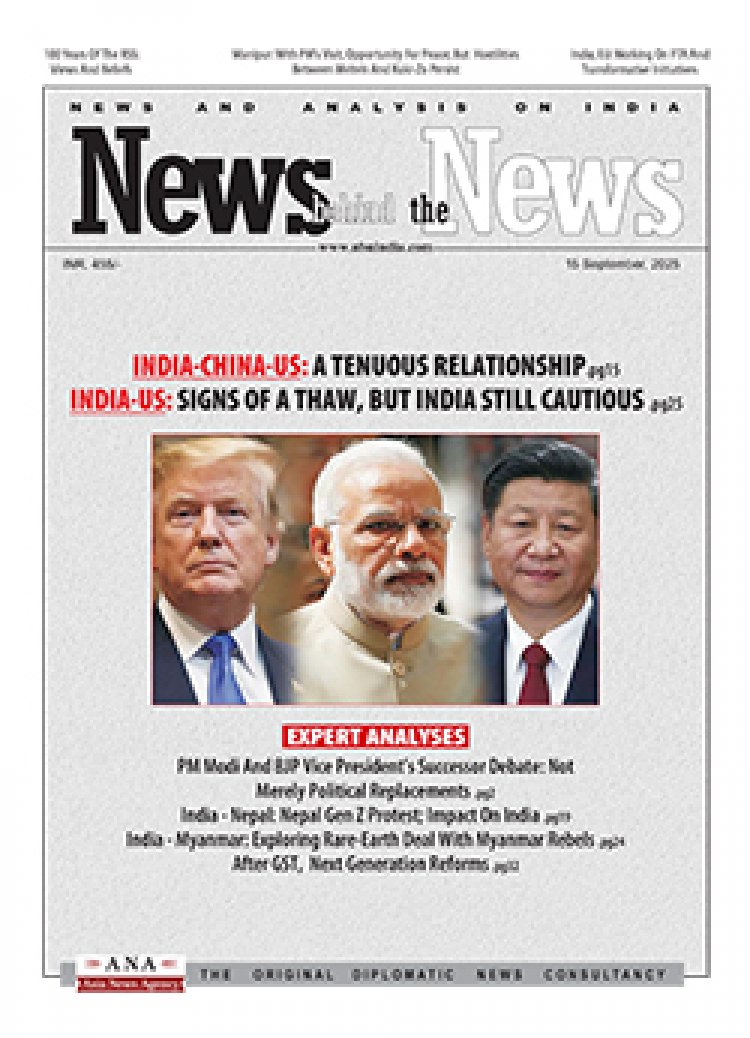RBI MPC Meeting: Repo Rate Slashed by 50 Basis Points to 5.5%
STORIES, ANALYSES, EXPERT VIEWS

The Reserve Bank of India’s Monetary Policy Committee (MPC) Friday slashed the repo rate by 50 basis points to 5.5%, marking the third consecutive rate cut this year. The committee also shifted its policy stance from 'accommodative' to 'neutral.' This 50-basis-point reduction is the sharpest rate cut since the 75-basis-point emergency easing during the Covid-19 crisis in March 2020.
RBI Governor Sanjay Malhotra said the move was based on a comprehensive assessment of current macroeconomic conditions.
Since February 2025, the RBI has lowered the policy repo rate by a total of 100 basis points. As a result, most banks have adjusted their repo-linked external benchmark-based lending rates (EBLRs) and marginal cost of funds-based lending rates (MCLR), making loans cheaper for borrowers. A reduction in the repo rate typically leads to lower EMIs for both retail and corporate borrowers.
Consequently, the standing deposit facility (SDF) rate under the liquidity adjustment facility (LAF) were adjusted to 5.25% and the marginal standing facility (MSF) rate and the Bank Rate to 5.75%.
This policy review comes amid a steady decline in inflation. According to the Ministry of Statistics and Programme Implementation, retail inflation eased to 3.16% in April, down from 3.34% in March, well below the RBI’s comfort level of 4%. The downward trend in inflation has raised expectations of a more accommodative stance from the central bank.
GDP at 6.5%
India’s growth projection for FY26 has been retained at 6.5%, with quarterly estimates unchanged.
India’s GDP rose by 7.4% in the March quarter, the fastest in four quarters, though FY25 growth settled at 6.5%, slightly lower than past years’ averages. Governor Malhotra acknowledged external challenges like geopolitical tensions and trade policy shifts but remained confident in the domestic growth trajectory, backed by a strong monsoon forecast and robust services activity.
The RBI also retained its quarterly GDP growth projections for FY2025-26 at 6.5% for Q1, 6.7% for Q2, 6.6% for Q3, and 6.3% for Q4- unchanged from its previous estimates.
The Indian economy is progressing well, broadly on expected lines despite global uncertainties.
Inflation forecast revised downwards
Citing a sustained decline in price pressures, the RBI cut its inflation forecast for FY25–26 to 3.7%, down from the 4% projected in April.
Malhotra noted that headline inflation hit a nearly six-year low in April, aided by falling food prices and fuel deflation. Core inflation also remained stable despite global commodity volatility.
The latest quarter-wise estimates are: 2.9% in Q1, 3.4% in Q2, 3.5% in Q3, and 4.4% in Q4. The central bank maintained that risks to inflation outlook are “evenly balanced.”
CRR slashed by 100 bps
In a major liquidity-boosting move, the RBI announced a phased 100 bps cut in the Cash Reserve Ratio (CRR)- from 4% to 3%- to be implemented in four tranches of 25 bps each starting in September. This step is expected to inject around Rs 2.5 lakh crore into the banking system by November, enhancing banks’ lending capacity and lowering funding costs.
Expert views
Second engine to the consumption growth flight: Ranen Banerjee, Partner and Leader, Economic Advisory, PwC India said, ‘The policy rate easing, combined with the liquidity increase for banks when system liquidity is already comfortable, is likely to add a second engine to the consumption growth flight that is anticipated to be already in flight from the income tax cuts taking effect in FY26. This is significantly positive for urban consumption, which printed weak in past quarters, and will also likely add a fillip to real estate, discretionary purchases, and private capex.’
Repo rate is likely to decline further: A report by Nuvama says ‘Demand conditions continue to often, as seen in slowing credit growth, auto sales, RE sales and HH wages, while inflation too has turned quite soft, hovering below 4 per cent on a 3MMA basis, both at the headline and core (ex-commodities) levels.’ The report adds that over a period of time, the repo rate is likely to decline to the 5-5.25 per cent range.
Expected to inject Rs 2.5 lakh crore into the banking system: While RBI’s jumbo 50 basis point rate cut ‘will impact bank margins in the near term. However, the credit growth that this rate cut will hopefully stimulate will compensate for the dip in margins,’ said Dr. VK Vijayakumar, Chief Investment Strategist at Geojit Investments.
The RBI’s move to reduce CRR by 100 bps over four tranches starting September 6, 2025, is expected to inject Rs 2.5 lakh crore into the banking system. Analysts say this will significantly improve system liquidity and offset the NIM squeeze caused by falling lending rates.
At a time when monetary transmission has often been patchy, experts say this combo-move—a rate cut plus liquidity easing—could finally push banks to pass on the benefits more effectively.
A rare convergence: Experts believe 'this is not business-as-usual monetary policy. It’s a deliberate realignment based on a rare convergence: falling inflation, stable external accounts, and the need to pre-empt global slowdown spillovers.’
















